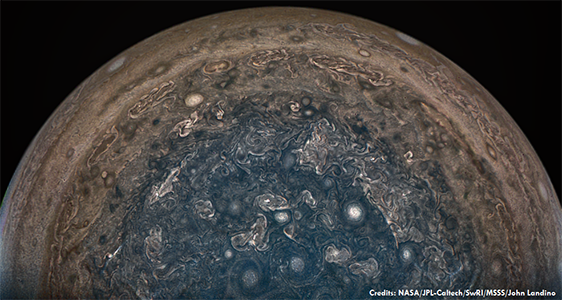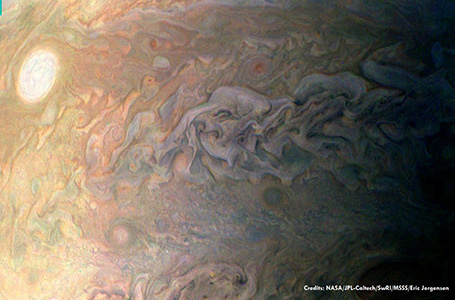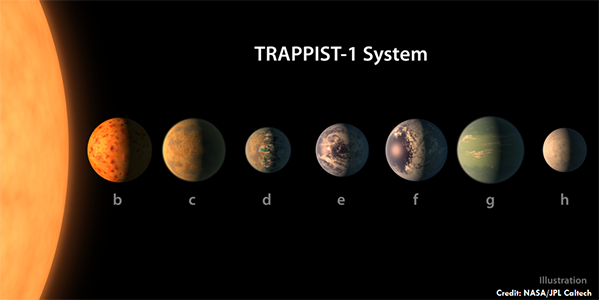Cosmic Curiosities
“Nature is an infinite sphere whose center is everywhere and whose circumference is nowhere.”
~ Blaise Pascal, 17th Century French Philosopher/Writer
March Calendar Madness
 If college basketball was played in early America, “March Madness” would coincide with the start of the new year on March 25th. It wasn’t until 1752 that England and its new colonies decided to finally switch to the Julian calendar (established way back in 45 B.C.) and January 1st became the “new” New Year.
If college basketball was played in early America, “March Madness” would coincide with the start of the new year on March 25th. It wasn’t until 1752 that England and its new colonies decided to finally switch to the Julian calendar (established way back in 45 B.C.) and January 1st became the “new” New Year.
This calendar story actually starts further back in the early Roman Empire, around 700 B.C. Back then, March was the first month, and the calendar had only 10 months; January and February were so cold and bleak they weren't even part of the year.
March was a natural choice to start the year. In March, life starts to blossom once again. With each day, temperatures warm as winter subsides. Today, we still celebrate this re-birth with the Spring Equinox on March 20th. The Romans also may have been honoring their god Mars with the first month because Mars was considered the father of Romulus, the legendary founder of Rome.
March was named after the god of war—Martius, or Mars! This doesn’t seem to connect at all with the green, warm, life-renewing aspects of spring and a new year. But the Roman god of war was also the guardian of agriculture. March was the beginning of the season for both farming and warfare.
Eventually, January and February were added to the calendar by Numa Pompilius, an early king of Rome – thus completing the 12-month year we recognize today. The Roman god Janus, who had two faces—one face looking back and one looking forward—was the perfect namesake for the month of January and the start of a fresh year. Since winter was a quieter time of no harvest, the Romans had a festival for the forgiveness of sins. The Latin word to purify is februare. Thus, the second month, February, was so named.
The new calendar also featured two epic emperors. The seventh month became July for Julius Caesar, and the eighth, August, for Augustus Caeser.
The strange madness of the Roman calendar came to an end in the times of Julius and Augustus Caesar. By this time, their calendar had become very inaccurate. It was declared by Caesar that 46 B.C. would have 445 days before the new calendar started in 45 B.C. They called that wildly long year the "last year of confusion."
At long last, the March 25 “New Year” stopped in 1752 when the British government adopted the Julian calendar used by neighboring European countries, which had become a business necessity due to increased communication and commerce between countries.
NASA Taps Amateurs for New Jupiter Pictures!

A collaboration between NASA and citizen scientists beautifully bring science and art together through new pictures of Jupiter. The artistic image above was made by John Landino, one of these Jupiter enthusiasts. He processed and enhanced the raw data image from NASA’s Juno spacecraft, which arrived at the distant world in July 2016. Citizen scientists can crop the pictures, augment features in various colors, and even create collages. The altered images are then voted on within guidelines set up by NASA.

The citizen scientists are encouraged to highlight a specific point of interest. This image by Eric Jorgensen draws attention to Jupiter's swirling clouds, and the white oval storm called the "pearl." Jupiter’s wind speeds in these storms can top 400 miles per hour—stronger than any hurricane on Earth.
See more pictures from Jupiter’s citizen scientists here.
A Cornucopia of Earth-size Planets!
On February 22, 2017, NASA announced the discovery of seven new planets the approximate size of Earth. It’s an exciting discovery because they are close together and located in the star’s habitable zone—a “goldilocks” area where liquid water could exist. The number of confirmed exo-planets is nearing 4,000—a figure that will continue to grow as our technology advances. Plus, we have only searched a tiny part of our Milky Way galaxy (not to mention the billions upon billions of other galaxies).

More data about the new planets:
- TRAPPIST-1a is the star. TRAPPIST-1 is the entire planetary system.
- They are located in constellation Aquarius.
- Their distance from us is about 39 light years—235 trillion miles—away.
- Their star is a cool, red dwarf star—12 times less massive than our Sun, slightly larger than Jupiter.
- This star is not visible to the human eye in Earth’s night sky.
- This was a collaborative discovery! Initial detection was by TRAPPIST (TRAnsiting Planets & PlanetesImals Small Telescope). Additional planets were identified by Spitzer space telescope, Very Large Telescope, UKIRT, the Liverpool Telescope, and William Herschel Telescope.
For more information, visit NASA here.
Sky Sights
Venus takes a quick dive into the Sun this March. On March 25, it will be at inferior conjunction between the Earth and Sun and not visible. It will quickly become visible in April in the morning sky.
Mars will take sole residence in the evening sky in the west. Watch a crescent Moon shining nearby—twice! Look for the red planet on March 2 with Venus much lower. On March 30, Mars will be joined by the most elusive planet, Mercury. The closest planet to the Sun is difficult to see due to the Sun’s glare preventing you from seeing it against a dark background.
Jupiter rises just after sunset by the end of March! On April 7, the king planet will be at opposition. Like a full Moon, it will rise when the Sun sets, and set when the Sun rises. Observe a great trio on March 15 as the Moon joins Jupiter and Spica.
Saturn also rises earlier in March. By month’s end, it starts to shine above the southeast horizon by 12:30pm. The Moon shines close by on the mornings of March 20-21.
Star Map
 Download the March Star Map.
Download the March Star Map.
Sign Up
Send an e-mail to Planetarium Director Bob Bonadurer at bonadurer@mpm.edu and place 'subscribe' in the subject line to receive the Starry Messenger and monthly star map.
![]() Follow Bob on Twitter @MPMPlanetarium.
Follow Bob on Twitter @MPMPlanetarium.

